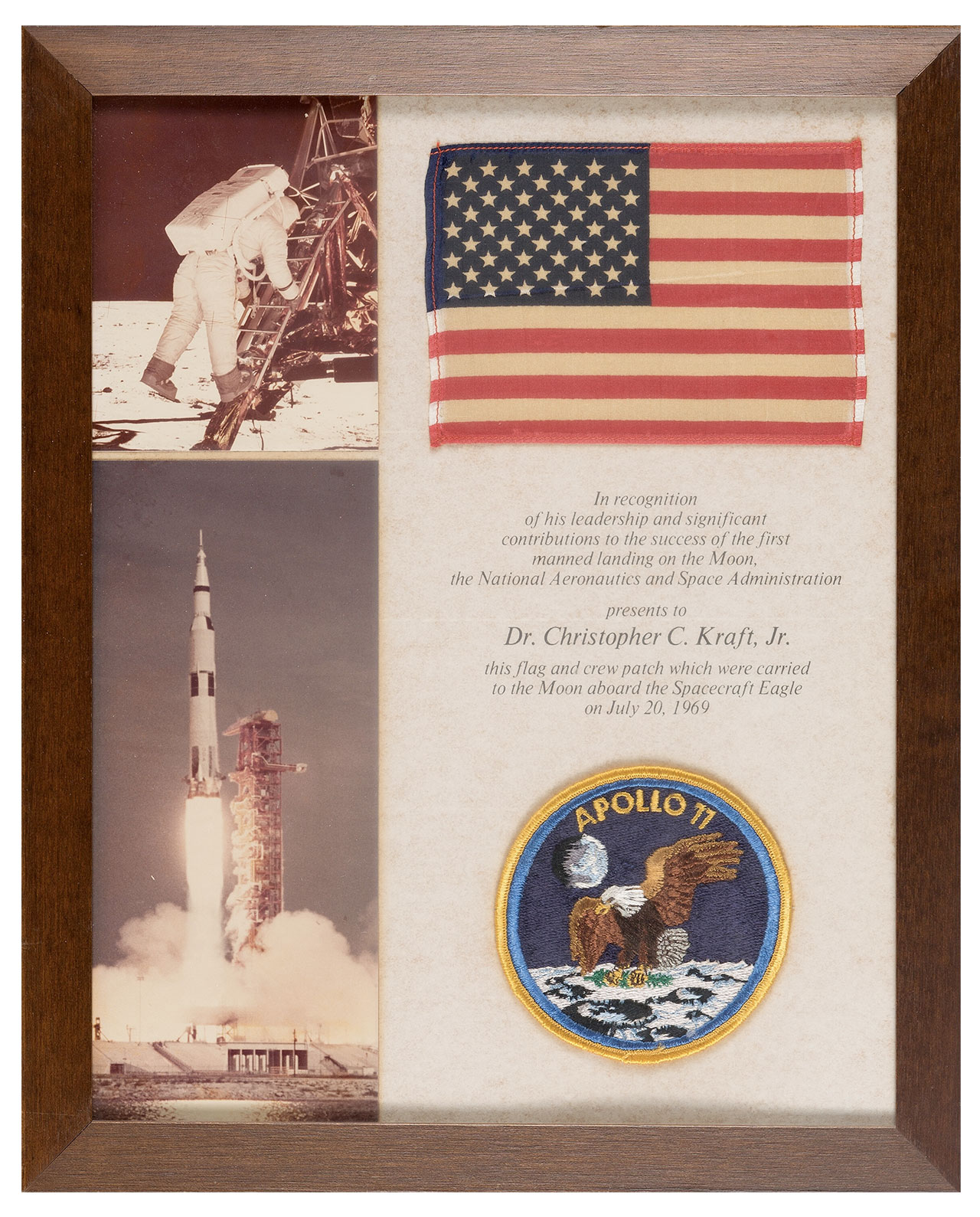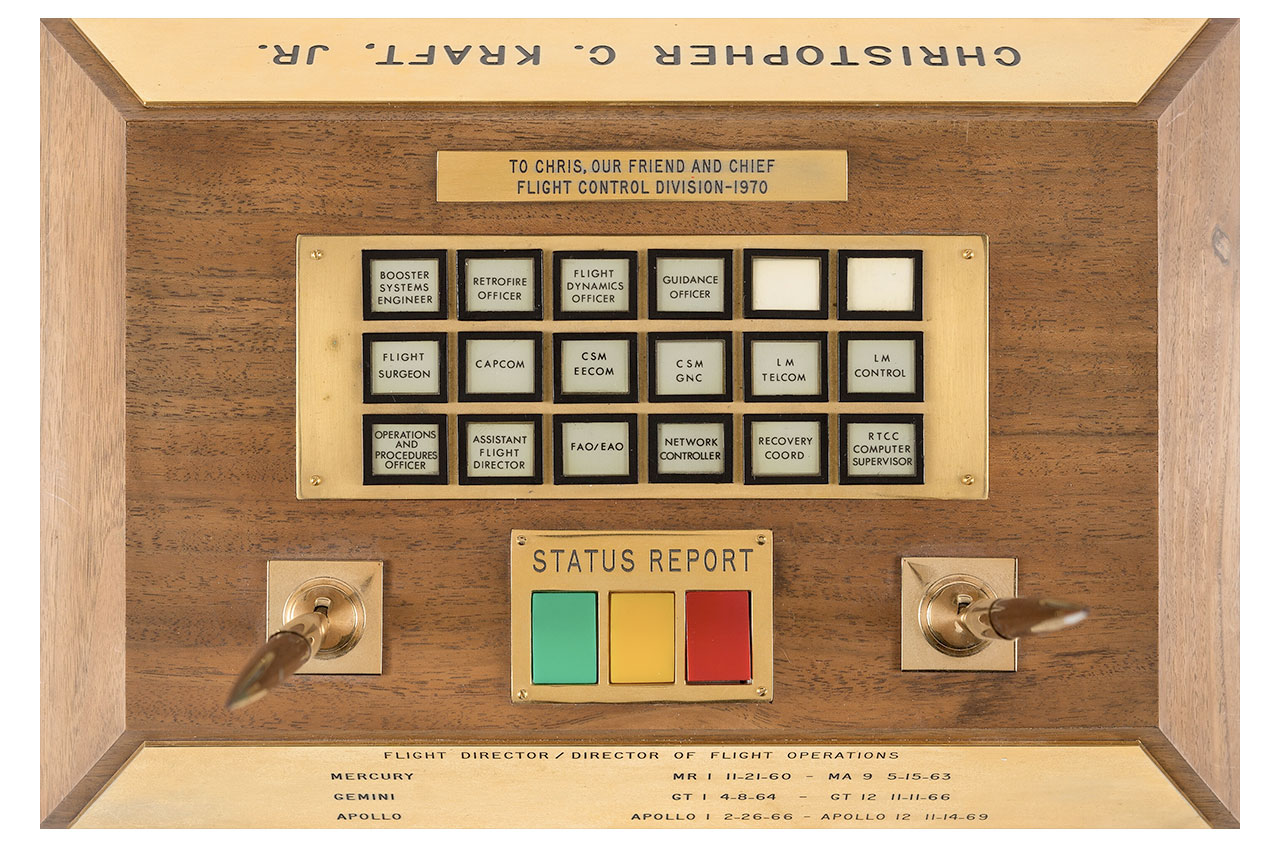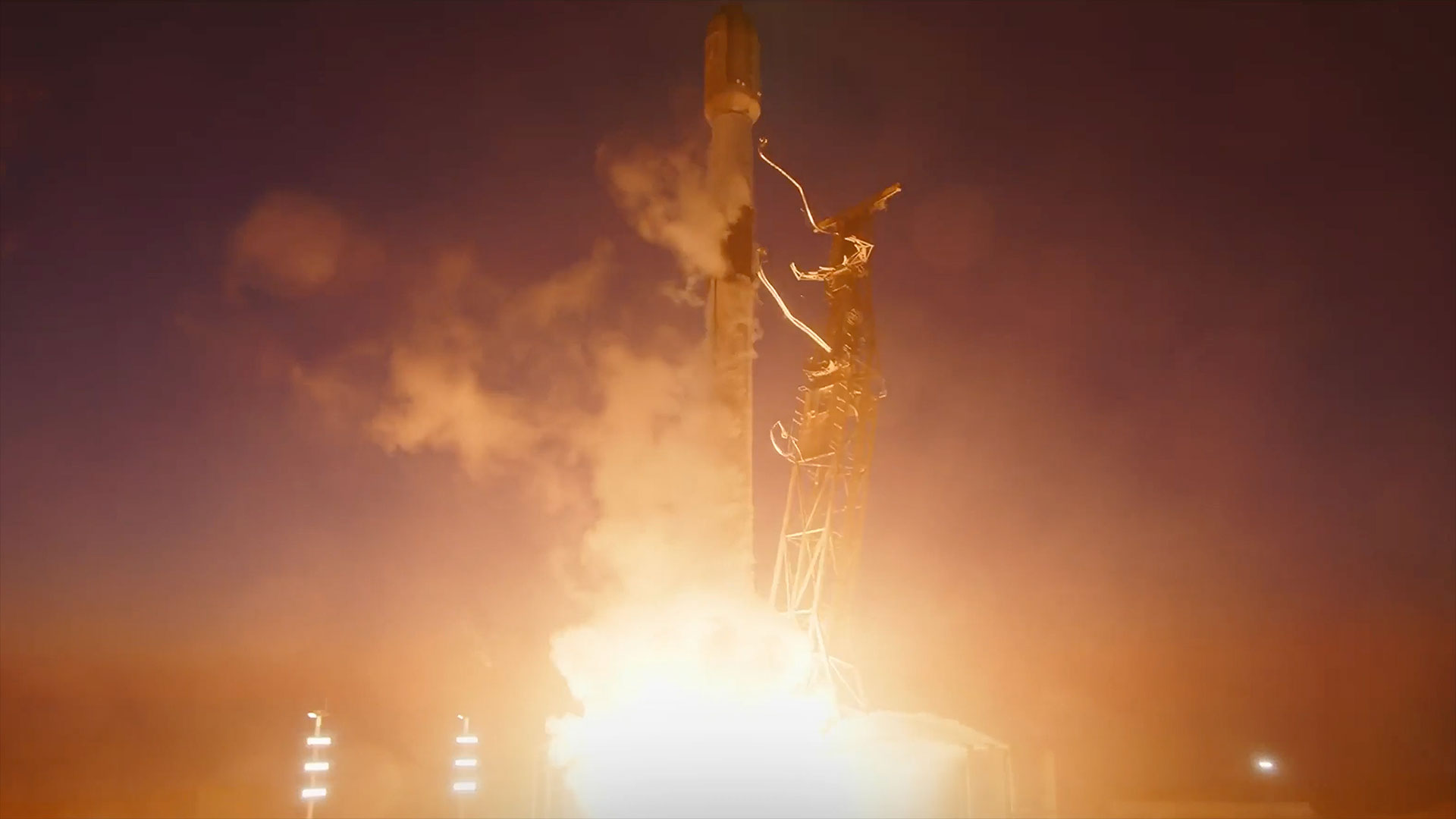First NASA flight director's mission control mementos at auction

The original headset used by NASA's first flight director has been given the "go" to proceed to auction.
The Western Electric Bell System 52 headset worn by Christopher C. Kraft, Jr., the "father of Mission Control," is among the more than 100 artifacts and mementos being offered by Heritage Auctions on behalf of the legendary engineer's estate. The auction house will hold the live sale on Friday (May 21) in Dallas and online.
"A valid argument can be made that Chris Kraft was as important to the growth and success of NASA as anyone in its history," Brad Palmer, Heritage Auctions' space exploration consignment director, said in a statement. "He was the director of the Johnson Space Center for a decade during a crucial time in NASA's history, and came up with the concept of NASA's Mission Control, which now bears his name."
As NASA's first flight director, Kraft not only defined the position's role, but devised how mission planning and operations were conducted. Beginning with the launch of the first American astronaut in space 60 years ago this month, Kraft developed the processes for go/no-go decisions, space-to-ground communications, real-time problem solving, mission tracking and crew recovery.
Related: NASA Names Mission Control After 1st U.S. Space Flight Director

Kraft's NASA career spanned the Mercury, Gemini, Apollo, Skylab and early space shuttle missions. He died in 2019 at the age of 95.
Kraft wore the Western Electric Bell System 52, a telephone operator's headset, for the first four Mercury astronaut flights, including Alan Shepard's and Gus Grissom's suborbital hops and the orbital missions flown by John Glenn and Scott Carpenter. Kraft kept the headset as a personal memento after it was replaced by a more modern device.
Get the Space.com Newsletter
Breaking space news, the latest updates on rocket launches, skywatching events and more!
The one earpiece apparatus, complete with an attached microphone and cloth-covered steel headband, is clearly visible in many of the photos taken of Kraft in the Mercury Control Center, including an image featured on the cover of his 2001 autobiography, "Flight: My Life in Mission Control."
"It would be virtually impossible to overstate the importance of this headset and its role in the NASA space program," Palmer said. "It's difficult to imagine how thin the connection to home must have felt for those first astronauts on the initial Mercury missions. That connection literally went through this headset, and kept those astronauts connected to one of the most impactful pioneers of space travel."
(Kraft did not talk directly with the astronauts while they were in space, but he gave the commands that were relayed to them by the capsule communicator, or Capcom, another astronaut staffing a console in Mission Control.)
Heritage set the opening bid on Kraft's Mercury headset at $1,750, which pre-auction bidding has already exceeded. (In addition to the hammer price, Heritage charges a buyer's premium of 25% on bids up to $300,000.)
Other items from Kraft's estate include a 1970s-era headset that he wore during the early shuttle program (opening bid: $1,000) and a desktop name plate and pen set that has mounted on it 18 small lights, 16 of which are labeled for the Apollo program consoles that Kraft led as flight director, such as "Guidance Officer" and "Flight Surgeon" (opening bid: $600).

Also included in the sale are mementos from the many missions that Kraft worked, including acrylic-embedded heat shield segments from Gemini and Apollo spacecraft, including a plug from Apollo 11, the first lunar landing mission in 1969. Kraft also owned a small American flag and a mission patch that was flown by Neil Armstrong and Buzz Aldrin to the surface of the moon on the lunar module Eagle (opening bid: $25,000).
Other presentations from Kraft's estate include a three-panel display of flags flown on Apollo 12, Apollo 16 and Apollo 17 (opening bid: $12,000) and a large U.S. flag carried on STS-1, the first space shuttle mission (opening bid: $1,250).
The sale is rounded out by medallions flown on Gemini and Apollo missions; some of the awards Kraft was bestowed, including his National Aviation Hall of Fame induction medal; examples of correspondence he exchanged with astronauts and notable public figures; and other mementos, including a docking module umbilical that was gifted to him after the 1975 Apollo-Soyuz Test Project, the first joint U.S. and Russian mission .
Heritage's space exploration signature auction, featuring the estate of Christopher C. Kraft, Jr., also includes other memorabilia and artifacts consigned by astronauts and collectors spanning the last 60 years of human spaceflight. The sale will be held over two days, with in-person, phone and online bidding open for the first 388 lots (including the Kraft estate items) on Friday (May 21) and online bidding for the remaining 518 lots on Saturday.
Follow collectSPACE.com on Facebook and on Twitter at @collectSPACE. Copyright 2021 collectSPACE.com. All rights reserved.
Join our Space Forums to keep talking space on the latest missions, night sky and more! And if you have a news tip, correction or comment, let us know at: community@space.com.

Robert Pearlman is a space historian, journalist and the founder and editor of collectSPACE.com, a daily news publication and community devoted to space history with a particular focus on how and where space exploration intersects with pop culture. Pearlman is also a contributing writer for Space.com and co-author of "Space Stations: The Art, Science, and Reality of Working in Space” published by Smithsonian Books in 2018.In 2009, he was inducted into the U.S. Space Camp Hall of Fame in Huntsville, Alabama. In 2021, he was honored by the American Astronautical Society with the Ordway Award for Sustained Excellence in Spaceflight History. In 2023, the National Space Club Florida Committee recognized Pearlman with the Kolcum News and Communications Award for excellence in telling the space story along the Space Coast and throughout the world.

